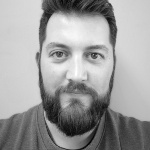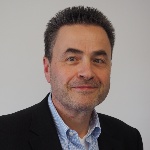Photoresists are used in industry for lithographic processes to produce surface structures in the sub-micrometer range. In the final step of the manufacturing process, the cured polymer layer acting as shaping die for the microstructures grown by electroplating has to be removed. Etching of the cured resist pattern poses an extreme challenge, as the microstructures must not be damaged. Dry plasma chemical etching by means of radicals generated in the plasma chamber of a remote plasma source RPS is a suitable means avoiding damage to the microstructures made of metals like nickel, copper or gold.
The aim of the study is to optimize the existing source with regard to its etching rate and gas temperature and to simplify its setup in order to save production costs. Using a FEM-based simulation software a model of the RPS has been developed to investigate the microwave distribution and the microwave coupling into the plasma chamber for different RPS setups. If a plasma is ignited, the electron density and thus the permittivity and the conductivity increase, which changes the electric field distribution in the plasma chamber. For this purpose, the model has been extended in a first step by a collision-free Drude-Lorentz model. Later the FEM model will be extended by a more complex plasma model, including both collisions and reactions, which will finally be coupled with gas flows and heat transfer as well as the electric field.
By using a high speed camera system during the ignition process the average light intensity can be plotted vs. time and thus give information about the ignition process itself and the stability of the plasma. The processes in the remote plasma source can be studied by investigating the plasma via optical emission spectroscopy, while the planar etching rate can be determined in dependence of the microwave power or other parameters like the gas flow.
Several Bachelor’s and Master’s theses are issued in the framework of this dissertation. For further information please contact the persons below.

Steffen Pauly M.Sc.
Ph. D. Student, Plasma Technology

Matthias Walker
Dr.-Ing.Head of Administration / Head of Plasma Technology



